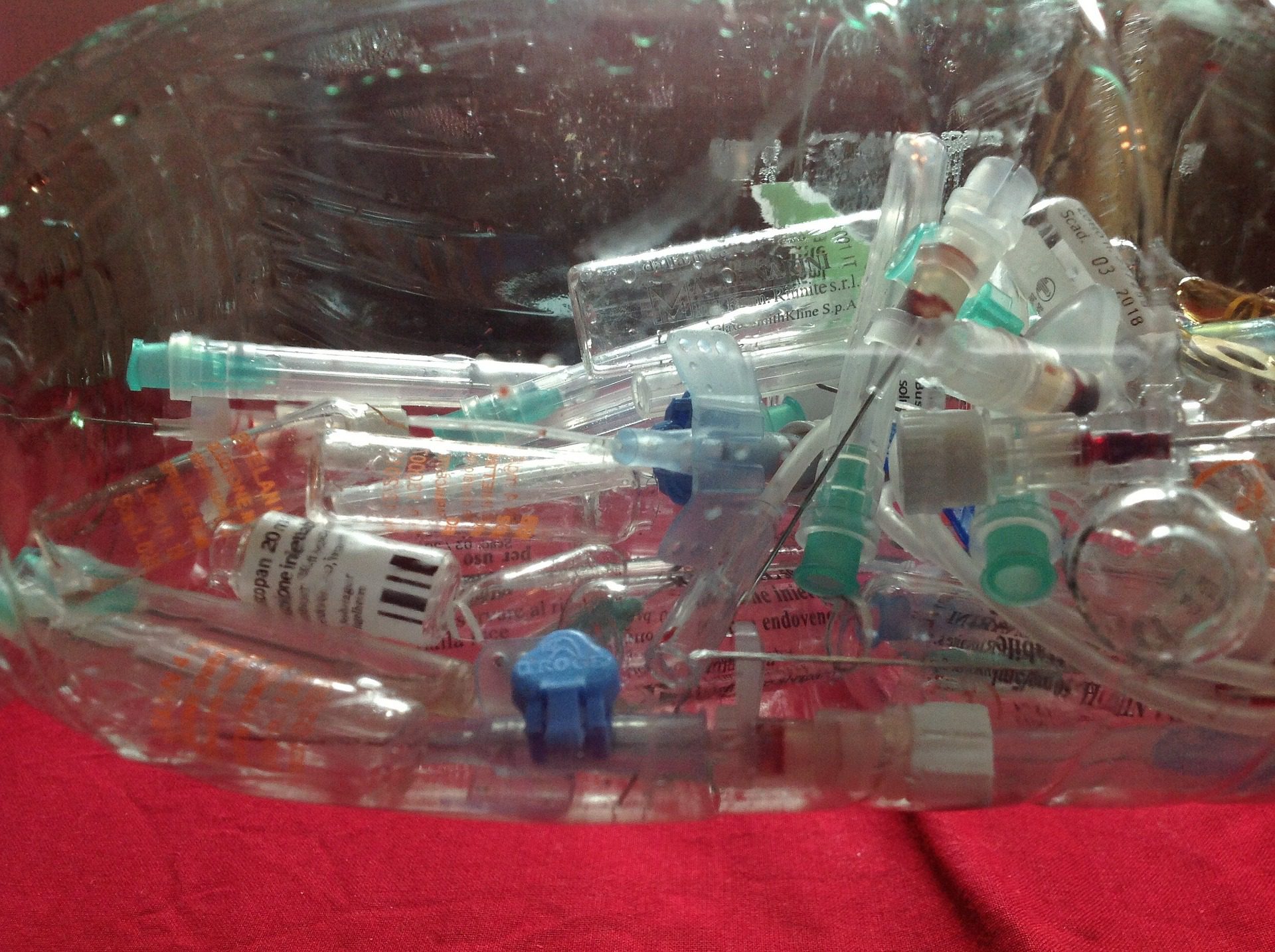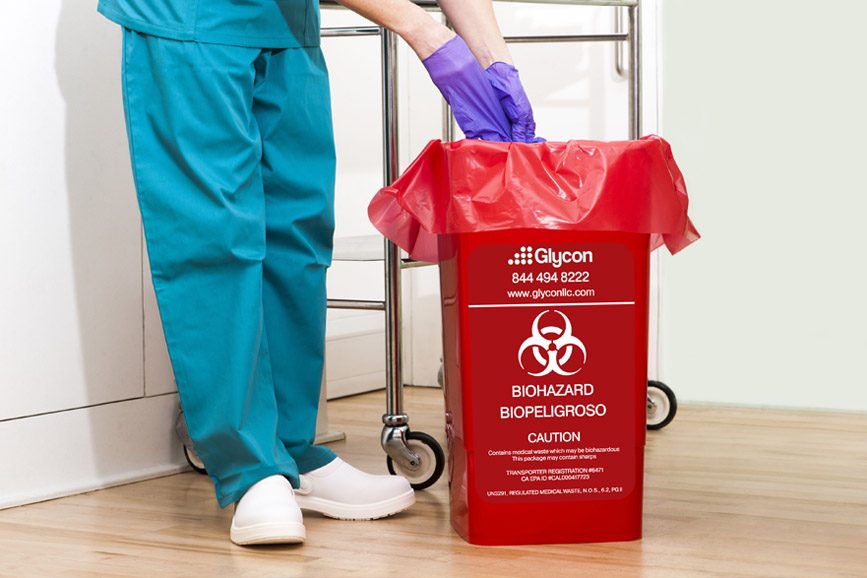Guardians of Tidiness: Resident Medical Waste Removal Service for Your Assurance
Guardians of Tidiness: Resident Medical Waste Removal Service for Your Assurance
Blog Article
Keep Ahead of Laws: Specialist Guidance on Medical Garbage Disposal
In a globe where the healthcare industry is regularly evolving, it is essential for clinical facilities to stay in advance of policies when it comes to the proper disposal of clinical waste. From recognizing the different categories of clinical waste to applying the ideal collection and segregation methods, this conversation will certainly offer actionable tips and valuable understandings to assist centers stay in advance of laws in the ever-changing landscape of medical waste disposal.
Comprehending Medical Waste Categories
Comprehending medical waste classifications is crucial for appropriate disposal and administration in healthcare facilities. Medical waste describes any kind of waste produced by health care activities that may position a danger to public health and wellness or the setting. It is crucial to categorize clinical waste properly to guarantee its safe handling, transportation, disposal, and therapy.
There are several groups of medical waste that health care centers need to be acquainted with. One of the most common classifications consist of infectious waste, pathological waste, sharps waste, pharmaceutical waste, and chemical waste. Each classification has details guidelines and guidelines for its proper administration and disposal.
Infectious waste includes products contaminated with blood or other physical liquids, such as gloves, dress, and lab societies. Pathological waste refers to human cells, organs, or body parts that call for special handling and disposal. Sharps waste consists of used needles, syringes, and various other sharp things that can trigger injury and transfer infections. Pharmaceutical waste consists of run out, extra, or infected drugs that require careful handling and disposal. Chemical waste consists of solvents, anti-bacterials, and other chemical compounds made use of in health care facilities.
Staying Up-To-Date With Regulatory Changes
Staying existing with governing adjustments is critical for healthcare facilities to make certain conformity and proper management of medical garbage disposal. medical waste removal near me. With policies continuously developing, it is important for medical care centers to remain current to stay clear of charges, fines, and possible damage to the atmosphere and public health
To remain ahead of regulatory adjustments, medical care facilities should develop a system for monitoring and monitoring updates. This can be done by registering for regulatory e-newsletters, participating in meetings and workshops, and actively taking part in market associations. Additionally, centers ought to assign a personnel or group in charge of staying informed and sharing info to pertinent stakeholders.
Routine communication with regulatory firms is likewise essential. Healthcare centers ought to develop connections with local, state, and federal agencies to guarantee they recognize any changes in laws that might influence their waste administration practices. This can be done through routine meetings, participation in public comment durations, and proactive engagement with regulative firms.
Moreover, health care facilities need to think about partnering with waste management firms that focus on medical waste disposal (medical waste disposal services with WasteX). These business are frequently fluent in the most up to date policies and can give guidance and support to make sure conformity
Carrying Out Appropriate Collection and Partition Techniques
To successfully manage clinical waste disposal, medical care facilities must develop correct collection and segregation methods based on regulative standards. Executing these approaches guarantees the risk-free handling and disposal of possibly hazardous products, protects the setting, and minimizes the threat of infections and injuries to healthcare workers and the general public.
Correct collection and partition approaches entail the usage of marked containers and classifying systems. Medical care centers need to offer clearly identified containers for different kinds of medical waste, such as sharps, transmittable waste, pharmaceutical waste, and non-hazardous waste. These containers should be color-coded and plainly marked to prevent confusion and advertise simple recognition.
In addition, medical care facilities must educate their staff on the appropriate procedures for gathering and setting apart clinical waste. This consists of educating them on the different kinds of waste, the ideal containers to make use of, and the relevance of complying with guidelines and laws. Regular training sessions and correspondence course need to be performed to guarantee that team member remain current on finest practices.
Additionally, healthcare centers need to develop a system for regular collection and disposal of medical waste. This might include partnering with certified waste management firms that focus on medical waste disposal. These business will guarantee that the collected waste is delivered and taken care of in conformity with governing requirements.
Picking the Right Disposal Methods

Incineration is just one of the most efficient and Related Site typical approaches for dealing with specific kinds of clinical waste, such as pathological waste and sharps. It includes the regulated burning of waste at heats, minimizing it to ash. Incineration can launch harmful pollutants into the air and add to air contamination.

Chemical therapy entails the usage of chemicals to reduce the effects of the waste and sanitize. Microwave therapy makes use of microwave power to heat and disinfect the waste.
Making Certain Conformity Through Paperwork and Training
After very carefully taking into consideration the proper disposal approaches for medical waste, healthcare facilities should make sure conformity with guidelines and decrease ecological effect by carrying out efficient paperwork and training procedures. This step is important in preserving a risk-free and sustainable environment for both healthcare workers and the public.

Medical care workers that deal with clinical waste should get appropriate training on waste partition, dealing with, and disposal treatments. By offering detailed training, medical care centers can empower their personnel to make informed choices and minimize the danger of inappropriate waste disposal.
Final Thought
To conclude, staying important source in advance of policies in medical waste disposal is important for medical care facilities. medical waste removal. Recognizing the different classifications of clinical waste, remaining upgraded with regulative changes, executing proper collection and segregation approaches, picking the ideal disposal techniques, and guaranteeing compliance via documentation and training are all important actions. By adhering to these standards, healthcare companies can efficiently dispose and take care of of clinical waste in a accountable and safe way
From understanding the various classifications of medical waste to applying the best collection and segregation techniques, this discussion will certainly supply workable ideas and important understandings to help centers stay in advance of policies in the ever-changing landscape of clinical waste disposal. - medical waste disposal services with WasteX
The most typical groups include transmittable waste, pathological waste, sharps waste, pharmaceutical waste, and chemical waste. Healthcare facilities must give plainly labeled containers for different types of clinical waste, such as sharps, transmittable waste, pharmaceutical waste, and non-hazardous waste. Healthcare facilities must establish an extensive system to tape and track all facets of clinical waste disposal, including kinds of waste generated, quantities, and disposal methods used. Healthcare workers that take care of clinical waste should receive appropriate training on waste segregation, handling, and disposal procedures.
Report this page